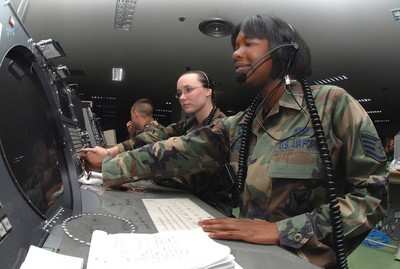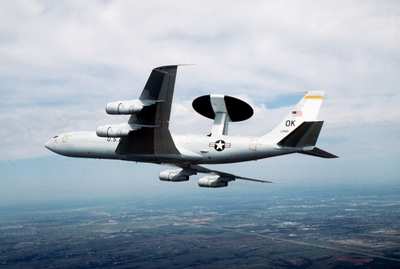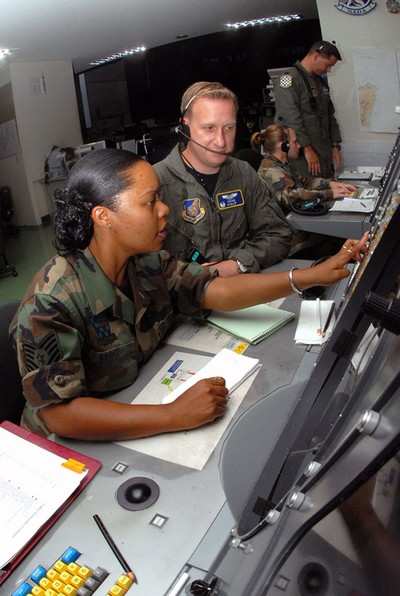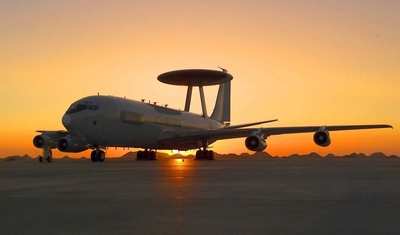Handles Ground Radar Ops For AWACS
When it comes to supporting the 18th Wing's flight training
mission, one small unit at Japan's Kadena Air Base has a big
job.

With only 30 members, mostly weapons directors and radar
technicians, the 623rd Air Control Flight is headquartered on
Kadena under the 18th Operations Group, but conducts its business
from Naha Air Base at the southern part of Okinawa supporting the
44th and 67th fighter squadrons as well as other units and
services.
"We're a little unit no one knows about," said Maj. Chuck
Dennison, 623rd ACF commander. "We use four ground-based radars
around Okinawa which funnel information into the Southwest
Direction Center at Naha Air Base."
The direction center and radar are owned by the Japanese Air
Self-Defense Force and the two groups work side by side at Naha. "A
lot of people, who do know about us, don't know that we operate
from Naha Air Base," Major Dennison said.
A team consisting of officers, controllers and technicians make
the 20-mile trip to Naha every flying day to provide overlapping
command and control support with airborne warning and control
system aircraft, and primary support when AWACS is not
available.

Because the onboard radar in fighter aircraft are in the nose,
they only "see" forward and cannot detect or track other aircraft
to the side or rear. AWACS and the ground-based radar used by the
623rd ACF provide pilots with information on other aircraft in a
360-degree radius from their position.
The 623rd ACF, call sign Lightsword, provides 88 percent of the
wing's command and control missions, according to Major
Dennison.
"We're a safety net for the 18th Wing's fighter training
mission," said Staff Sgt. Jackie Robinson, 623rd ACF
controller.
The mission would not succeed without the controllers and
technicians working with each other on the 1960s-era radar scopes
at the direction center.
"While the system is old, it is extremely reliable," said Tech.
Sgt. D.J. Patton, 623rd ACF operations superintendent. "I can't
remember the last time, if ever, we had to cancel a training
mission because of a maintenance issue."

Because the direction center and radars are owned by JASDF and
only used by the 623rd ACF, the flight has nominal operating
expenditures.
"We are a very cost-effective unit," said Major Dennison. "We
have around 30 people, don't own any buildings and the only
equipment we have are three vehicles."
Members of the 623rd abide by Japanese culture, and do not wear
shoes inside the direction center.
"We take our boots off at the center," said Major Dennison. "We
do wear slippers. After more than 40 years use, there's not a
single scuff mark on the floor. It looks amazingly brand new."
There are three more direction centers covering different areas
on mainland Japan operated by JASDF, with 23 radar sites spread
among them. In time of war, members of Lightsword could deploy to
one of those sites depending on the location of U.S. aircraft
needing support.
The history of Lightsword dates back to the activation of the
305th Fighter Control Group in March 1943 at Bradley Field, Conn.
The unit was assigned to several locations in the United States
before moving to Okinawa near Okuma on the northern part of the
island in September 1945. It moved to Naha AB in 1957 and arrived
at Kadena in the center of the island in 1983.

A note of history of which Major Dennison is proud, the 623rd
ACF deployed to northern Japan in September 1983 to assist in
controlling air space for aircraft searching for bodies from Korean
Airlines Flight 007, shot down by the Soviet Union. That garnered a
letter for the unit from the South Korean minister of national
defense for their outstanding humanitarian effort.
"Lightsword has a distinguished past and an even brighter future
as it supported the Air Force's latest fighter, the F-22A Raptor,
which was on Kadena for three months during their first-ever air
and space expeditionary force deployment," said Major Dennison.
"I'm excited our unit controlled the cutting edge technology
fighter and I am very proud of the men and women in the little unit
with a big mission."
(Aero-News thanks Scott D. Hallford, 18th Wing Public
Affairs)
 ANN's Daily Aero-Term (10.14.25): Severe Icing
ANN's Daily Aero-Term (10.14.25): Severe Icing Aero-News: Quote of the Day (10.14.25)
Aero-News: Quote of the Day (10.14.25) ANN's Daily Aero-Linx (10.14.25)
ANN's Daily Aero-Linx (10.14.25) Classic Aero-TV: Curtiss Jenny Build Wows AirVenture Crowds
Classic Aero-TV: Curtiss Jenny Build Wows AirVenture Crowds True Blue Power and Mid-Continent Instruments and Avionics Power NBAA25 Coverage
True Blue Power and Mid-Continent Instruments and Avionics Power NBAA25 Coverage






